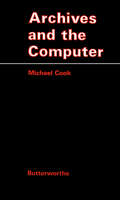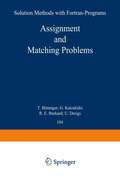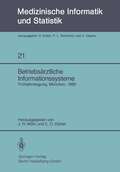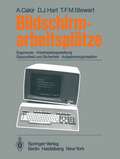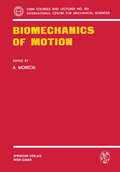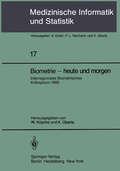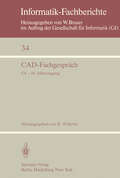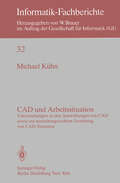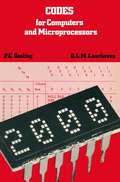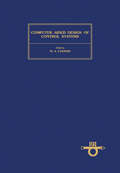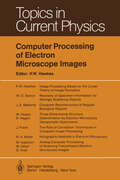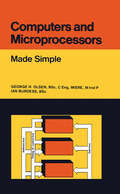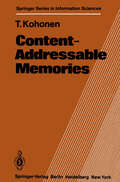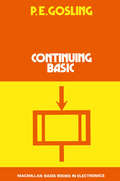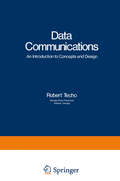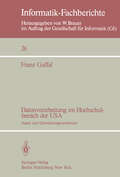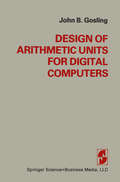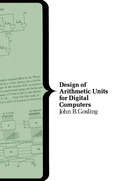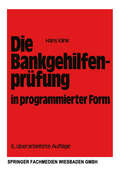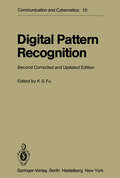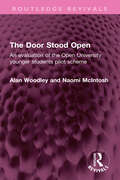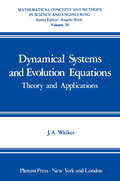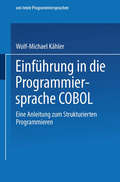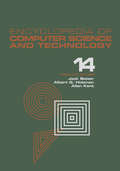- Table View
- List View
Archives and the Computer
by Michael J. CookArchives and the Computer deals with the use of the computer and its systems and programs in archiving data and other related materials. The book covers topics such as the scope of automated systems in archives; systems for records management, archival description, and retrieval; and machine-readable archives. The book also features examples of systems for records management from different institutions such as theTyne and Wear Archive Department, Dyfed Record Office, and the University of Liverpool. Included in the last part are appendices. Appendix A is a directory of archival systems, Appendix B contains guidelines for machine-readable and related records for preservation, and Appendix C covers machine-readable archives. The text is recommended for archivists who would like to know more about the use of computers in archiving of records and other related information.
Assignment and Matching Problems: Solution Methods with FORTRAN-Programs (Lecture Notes in Economics and Mathematical Systems #184)
by R. E. Burkard U. DerigsBetriebsärztliche Informationssysteme: Frühjahrstagung der GMDS, München, 21. – 22. März 1980 (Medizinische Informatik, Biometrie und Epidemiologie #21)
by J. R. Möhr C. O. KöhlerBildschirmarbeitsplätze: Ergonomie Arbeitsplatzgestaltung Gesundheit und Sicherheit Aufgabenorganisation
by A. Cakir D. J. Hart T. F. StewartBiometrie — heute und morgen: Interregionales Biometrisches Kolloquium 1980 der Deutschen Region und Region Österreich — Schweiz der Internationalen Biometrischen Gesellschaft München, 17.–20. März 1980 (Medizinische Informatik, Biometrie und Epidemiologie #17)
by W. Köpcke K. ÜberlaCAD-Fachgespräch: GI — 10. Jahrestagung, Saarbrücken, 30. September – 2. Oktober 1980 (Informatik-Fachberichte #34)
by R. WilhelmCAD und Arbeitssituation: Untersuchungen zu den Auswirkungen von CAD sowie zur menschengerechten Gestaltung von CAD-Systemen (Informatik-Fachberichte #32)
by M. KühnComputer Aided Design of Control Systems: Proceedings of the IFAC Symposium, Zürich, Switzerland, 29-31 August 1979
by M. A. CuenodComputer Aided Design of Control Systems focuses on the use of computers to analyze and design the control of various processes, as well as the development of program packages with different algorithms for digital computers. The selection first takes a look at the computer aided design of minimal order controllers, including design of interacting and noninteracting dynamic controllers of minimal order and basic algorithm. The book then discusses an accelerated Newton process to solve Riccati equation through matrix sign function; suboptimal direct digital control of a trickle-bed absorption column; and structural design of large systems employing a geometric approach. The text underscores the computer as an aid for the implementation of advanced control algorithms on physical processes and analysis of direct control algorithms and their parallel realization. Topics include hardware influences on the control, process influence, and interactive structure design of direct control systems. The book also takes a look at the optimal control of randomly sampled linear stochastic systems; computer aided design of suboptimal test signals for system identification; and computer aided design of multi-level systems with prescribed structure and control constraints. The selection is a dependable source of data for readers interested in the uses of computers.
Computer Processing of Electron Microscope Images (Topics in Current Physics #13)
by J. Frank P. W. Hawkes R. Hegerl W. Hoppe M. S. Isaacson D. Kopf J. E. Mellema W. O. Saxton M. Utlaut R. H. WadeTowards the end of the 1960s, a number of quite different circumstances combined to launch a period of intense activity in the digital processing of electron micro graphs. First, many years of work on correcting the resolution-limiting aberrations of electron microscope objectives had shown that these optical impediments to very high resolution could indeed be overcome, but only at the cost of immense exper imental difficulty; thanks largely to the theoretical work of K. -J. Hanszen and his colleagues and to the experimental work of F. Thon, the notions of transfer func tions were beginning to supplant or complement the concepts of geometrical optics in electron optical thinking; and finally, large fast computers, capable of manipu lating big image matrices in a reasonable time, were widely accessible. Thus the idea that recorded electron microscope images could be improved in some way or rendered more informative by subsequent computer processing gradually gained ground. At first, most effort was concentrated on three-dimensional reconstruction, particu larly of specimens with natural symmetry that could be exploited, and on linear operations on weakly scattering specimens (Chap. l). In 1973, however, R. W. Gerchberg and W. O. Saxton described an iterative algorithm that in principle yielded the phase and amplitude of the electron wave emerging from a strongly scattering speci men.
Computers and Microprocessors: Made Simple
by George H. Olsen Ian BurdessComputers and Microprocessors: Made Simple covers the basic concepts and applications of computers and microprocessors. The book discusses the basic concepts behind the architecture of a small digital computer including logic systems and the major functional blocks of the computer. The text also tackles the applications and operation of analog computers, electronic analog computers, and digital computers and its software (higher-level programming languages and flowcharts). Microprocessors are also discussed with regard to its evolution, architecture, types, and future trends. Students taking computer courses will find the book useful.
Content-Addressable Memories (Springer Series in Information Sciences #1)
by T. KohonenDesigners and users of computer systems have long been aware of the fact that inclusion of some kind of content-addressable or "associative" functions in the storage and retrieval mechanisms would allow a more effective and straightforward organization of data than with the usual addressed memories, with the result that the computing power would be significantly increased. However, although the basic principles of content-addressing have been known for over twenty years, the hardware content-addressable memories (CAMs) have found their way only to special roles such as small buffer memories and con trol units. This situation now seems to be changing: Because of the develop ment of new technologies such as very-large-scale integration of semiconduc tor circuits, charge-coupled devices, magnetic-bubble memories, and certain devices based on quantum-mechanical effects, an increasing amount of active searching functions can be transferred to memory units. The prices of the more complex memory components which earlier were too high to allow the application of these principles to mass memories will be reduced to a fraction of the to tal system costs, and this will certainly have a significant impact on the new computer architectures. In order to advance the new memory principles and technologies, more in formation ought to be made accessible to a common user.
Data Communications: An Introduction to Concepts and Design (Applications of Modern Technology in Business)
by Robert TechoThis book has evolved primarily from lecture notes for data communications courses taught at Georgia State University since 1969. Additional material was derived from seminar presentations that were made during this period as well as from consulting work. Teaching data communications in the College of Business Administration influenced the point of view of this material, giving it a semitechnical orientation. This point of view has been extended to the prepara tion of this book. Only those technical details were included which, it was felt, would lead the student to a better understanding of the subject. References are provided for those who desire further information in particular areas. The reader for whom this book is intended is the nontechnical person who has some knowledge of computer technology and who wishes to extend that knowledge to the field of data communications. The two key points stressed in this book are terminology and concepts. The objectives of this book are to enable the student: 1. To read articles in the field of data communications with an understand ing of their content. 2. To be able to engage in knowledgeable discussions with communica tions engineers on the subject of data communications. 3. To design and implement the hardware aspects of applications using data communications. The software that would be involved is beyond the scope of this book except where protocols are considered. v vi Preface 4. To effectively evaluate proposals for the implementation of data com munications systems.
Datenverarbeitung im Hochschulbereich der USA: Stand und Entwicklungstendenzen (Informatik-Fachberichte #26)
by Franz GaffalDesign of Arithmetic Units for Digital Computers
by GOSLINGThe original motivation for the development of digital computers was to make it possible to perform calculations that were too large to be attempted by a human being without serious likelihood of error. Once the users found that they could achieve their initial aims, they then wanted to go into greater detail, and to solve still bigger problems, so that the demand for extra computing power has continued unabated, and shows no sign of slackening. This book is an attempt to describe some of the more important techniques used today, or likely to be used in the near future, to perform arithmetic within the computing machine. There are, at present, few books in this field. Most books on computer design cover the more elementary methods, and some go into detail on one or two more ambitious units. Space does not allow more. In this text the aim has been to fill this gap in the literature. In selecting the topics to be covered, there have been two main aims: first, to deal with the basic procedures of arithmetic, and then to carry on to the design of more powerful units; second, to maintain a strictly practical approach. The number of mathematical formulae has been kept to a minimum, and the more complex ones have been eliminated, since they merely serve to obscure the essential principles.
Digital Pattern Recognition (Communication and Cybernetics #10)
by T. M. Cover Edwin Diday K. S. Fu A. Rosenfeld J. C. Simon T. J. Wagner J. S. Weszka J. J. WolfSince its publication in 1976, the original volume has been warmly received. We have decided to put out this updated paperback edition so that the book can be more accessible to students. This paperback edition is essentially the same as the original hardcover volume except for the addition of a new chapter (Chapter 7) which reviews the recent advances in pattern recognition and image processing. Because of the limitations of length, we can only report the highlights and point the readers to the literature. A few typographical errors in the original edition were corrected. We are grateful to the National Science Foundation and the Office of Naval Research for supporting the editing of this book as well as the work described in Chapter 4 and a part of Chapter 7. West Lafayette, Indiana March 1980 K. S. Fu Preface to the First Edition During the past fifteen years there has been a considerable growth of interest in problems of pattern recognition. Contributions to the blossom of this area have come from many disciplines, including statistics, psychology, linguistics, computer science, biology, taxonomy, switching theory, communication theory, control theory, and operations research. Many different approaches have been proposed and a number of books have been published. Most books published so far deal with the decision-theoretic (or statistical) approach or the syntactic (or linguistic) is still far from its maturity, many approach.
The Door Stood Open: An evaluation of the Open University younger students pilot scheme (Routledge Revivals)
by Alan Woodley Naomi McIntoshFirst published in 1980 The Door Stood Open deals with an early demand upon open university policy. It deals with important themes like context of the younger students pilot scheme; demand for open university places among the younger age group; motivational factors and potential study problems; the impact of open university study on the younger students; students who withdrew from the open university; younger students who could not attend full-time courses and how the younger students fared. In an age when distance learning is becoming a norm, this book serves as an important historical document for educationists and policy makers.
The Door Stood Open: An evaluation of the Open University younger students pilot scheme (Routledge Revivals)
by Alan Woodley Naomi McIntoshFirst published in 1980 The Door Stood Open deals with an early demand upon open university policy. It deals with important themes like context of the younger students pilot scheme; demand for open university places among the younger age group; motivational factors and potential study problems; the impact of open university study on the younger students; students who withdrew from the open university; younger students who could not attend full-time courses and how the younger students fared. In an age when distance learning is becoming a norm, this book serves as an important historical document for educationists and policy makers.
Dynamical Systems and Evolution Equations: Theory and Applications (Mathematical Concepts and Methods in Science and Engineering #20)
by John A. WalkerThis book grew out of a nine-month course first given during 1976-77 in the Division of Engineering Mechanics, University of Texas (Austin), and repeated during 1977-78 in the Department of Engineering Sciences and Applied Mathematics, Northwestern University. Most of the students were in their second year of graduate study, and all were familiar with Fourier series, Lebesgue integration, Hilbert space, and ordinary differential equa tions in finite-dimensional space. This book is primarily an exposition of certain methods of topological dynamics that have been found to be very useful in the analysis of physical systems but appear to be well known only to specialists. The purpose of the book is twofold: to present the material in such a way that the applications-oriented reader will be encouraged to apply these methods in the study of those physical systems of personal interest, and to make the coverage sufficient to render the current research literature intelligible, preparing the more mathematically inclined reader for research in this particular area of applied mathematics. We present only that portion of the theory which seems most useful in applications to physical systems. Adopting the view that the world is deterministic, we consider our basic problem to be predicting the future for a given physical system. This prediction is to be based on a known equation of evolution, describing the forward-time behavior of the system, but it is to be made without explicitly solving the equation.
Einführung in die Programmiersprache COBOL: Eine Anleitung zum Strukturierten Programmieren (uni-texte Programmiersprachen)
by Wolf-Michael KählerEncyclopedia of Computer Science and Technology: Volume 14 - Very Large Data Base Systems to Zero-Memory and Markov Information Source
by Jack Belzer Albert G. Holzman Allen Kent"This comprehensive reference work provides immediate, fingertip access to state-of-the-art technology in nearly 700 self-contained articles written by over 900 international authorities. Each article in the Encyclopedia features current developments and trends in computers, software, vendors, and applications...extensive bibliographies of leading figures in the field, such as Samuel Alexander, John von Neumann, and Norbert Wiener...and in-depth analysis of future directions."
